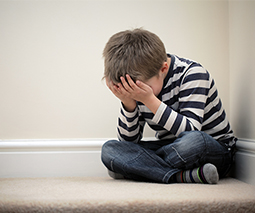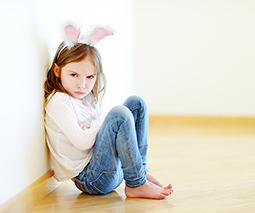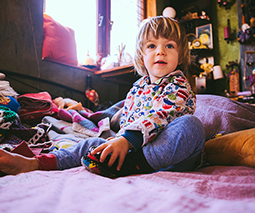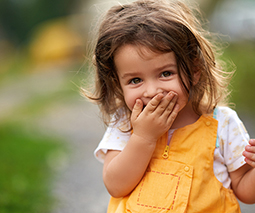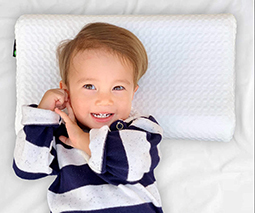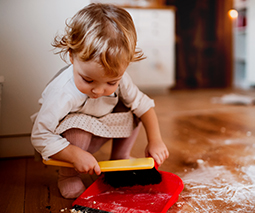Hitting, biting, running away: How to deal with challenging toddler behaviour

Are you living with a challenging toddler? One who likes to lash out and really cause a ruckus? Then we have some good news for you …
We spoke to Dr Kate Highfield about some of the more challenging behaviours toddlers exhibit. Dr Kate’s an expert in early learning with Early Childhood Australia and also a mother to a toddler. In other words she’s super-qualified to clue us in.
Listen to Dr Kate Highfield on Feed Play Love
Kids learn by making ‘mistakes’
The two-year-old phase of toddlerhood is dubbed as terrible and it’s true that two and three-year-olds can be particularly impulsive and challenging at times. But Dr Kate says it’s really important to remember that there’s a lot going on during those toddler years and that much of their behaviour is connected to this growth.
“Toddlers are at this integral time of learning,” Dr Kate says. “They are putting together ‘What if I do this? What’s the effect of that?’ They’re learning about cause and effect and their brains are making fantastic connections.”
“Remembering that toddlers are learning, their brains are making synaptic connections is so important because it gives you that opportunity to reframe behaviour.”
Doing a runner
That said, this doesn’t mean we accept all tricky behaviours, but we can strive to understand them. Take running away, for instance.
“I think we have to recognise what are non-negotiables,” Dr Kate stresses. “Running in car parks is a not negotiable.”
“What we have to look at is what is going on inside her brain and how do we engage with it. In this car park example … she’s actually not interested in running in a car park. She’s interested in how her body moves and the experience, just as the child jumping on the couch is learning ‘how does my body work in this space?’ or the child who is frustrated that you haven’t helped with tying shoe laces … or whatever it might be.”
Dr Kate suggests reaffirming that “we don’t run in car parks” or similar, then picking the child up and taking them somewhere safe.

Hitting and biting
Another non-negotiable toddler move is lashing out physically and Dr Kate has some insightful views on this too.
“Hitting and biting is also not negotiable,” she says. “Especially if there are younger siblings involved, because that’s not socially acceptable.”
“That’s where we go into emotion coaching. We acknowledge the feeling and then we set boundaries around the behaviour.”
“So, ‘It’s okay that you’re annoyed with me, but it’s not okay to hit’ and you stop the hitting. I don’t mean physically restrain in a way that would cause you to be in trouble with the law. I mean, gently and sensibly. So if you’re down at your child’s level and they’re hitting you, then you could stand up or you could just move away slightly,” Dr Kate explains.
“For lots of children, hitting and biting is a communication … many young children act out their frustrations through hitting or biting when they can’t communicate, when they’re distressed, when they’re hungry, when they’re frustrated or when they’re confused. So try to take that step back, see what the child is trying to communicate and then move forward from that.”
When toddlers say no
Dr Kate says that although a contrary toddler is challenging, there are some silver linings in this age.
“What children are learning at that point is they’re learning that they have agency. They have free will. They can make decisions that are independent of you. And that is what we want children to be as adults. We want them to be an agent of themselves, to be able to self-regulate and and manage themselves as an adult person.”
“So when a child is learning and saying things like, ‘No’, we have to recognise that, ‘Oh, okay, we’re stepping into a phase where they’re building their agency’,” Dr Kate explains. “[In] this toddler age group, we see a huge growth in that sense of agency, which is brilliant. But at the same time, it’s really challenging.”
Acknowledge it, label it, redirect it
“What we need to do when a child is saying no consistently is, again, acknowledge it, label it and then redirect it: ‘I can see you’re telling me you don’t want to brush your teeth. Actually, that’s what we have to do. Let’s make it fast or let’s see if we can brush your teeth while you’re sitting here or I’m going to chase you and then brush your teeth!’ Adding an element of fun, adding an element of playful so that you can redirect from that sense of no.”
“You’re acknowledging what they’re communicating and then redirecting to another more appropriate behaviour,” Dr Kate reaffirms.

